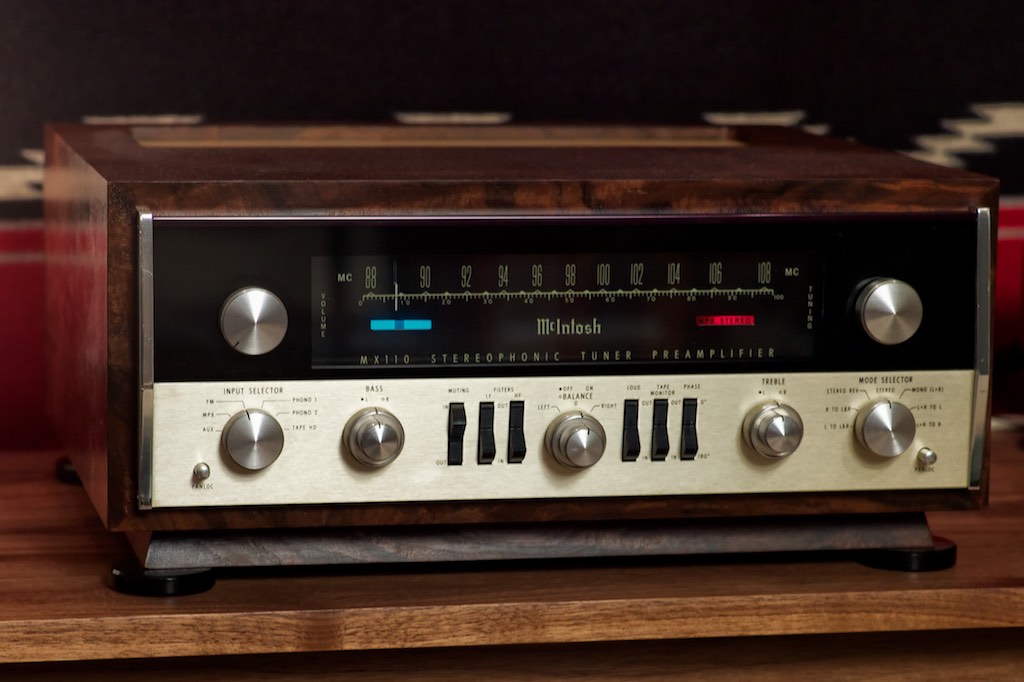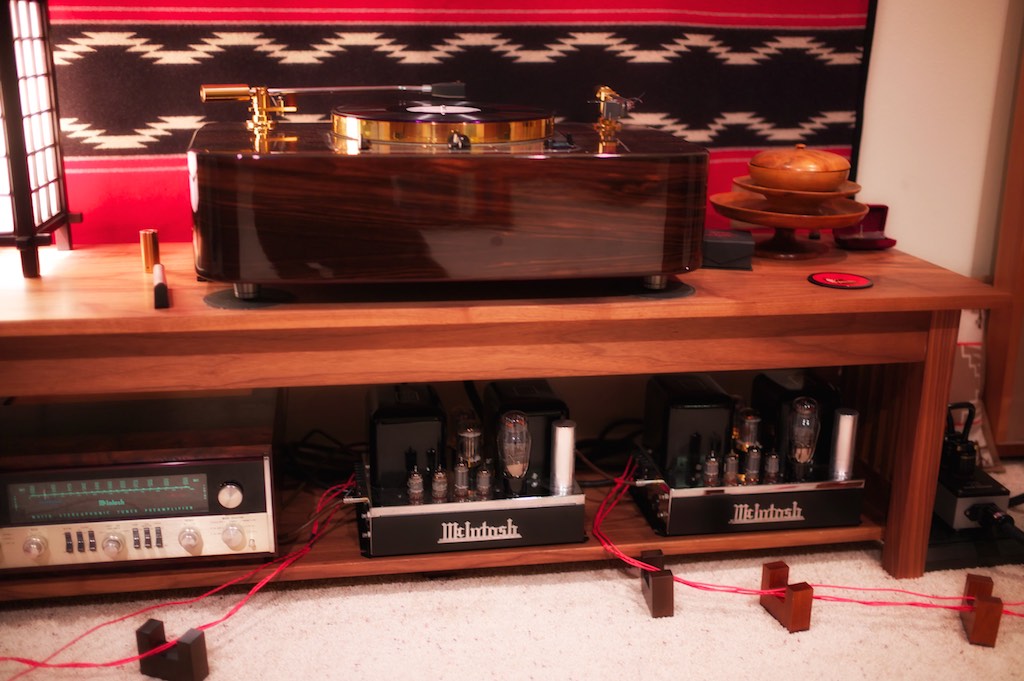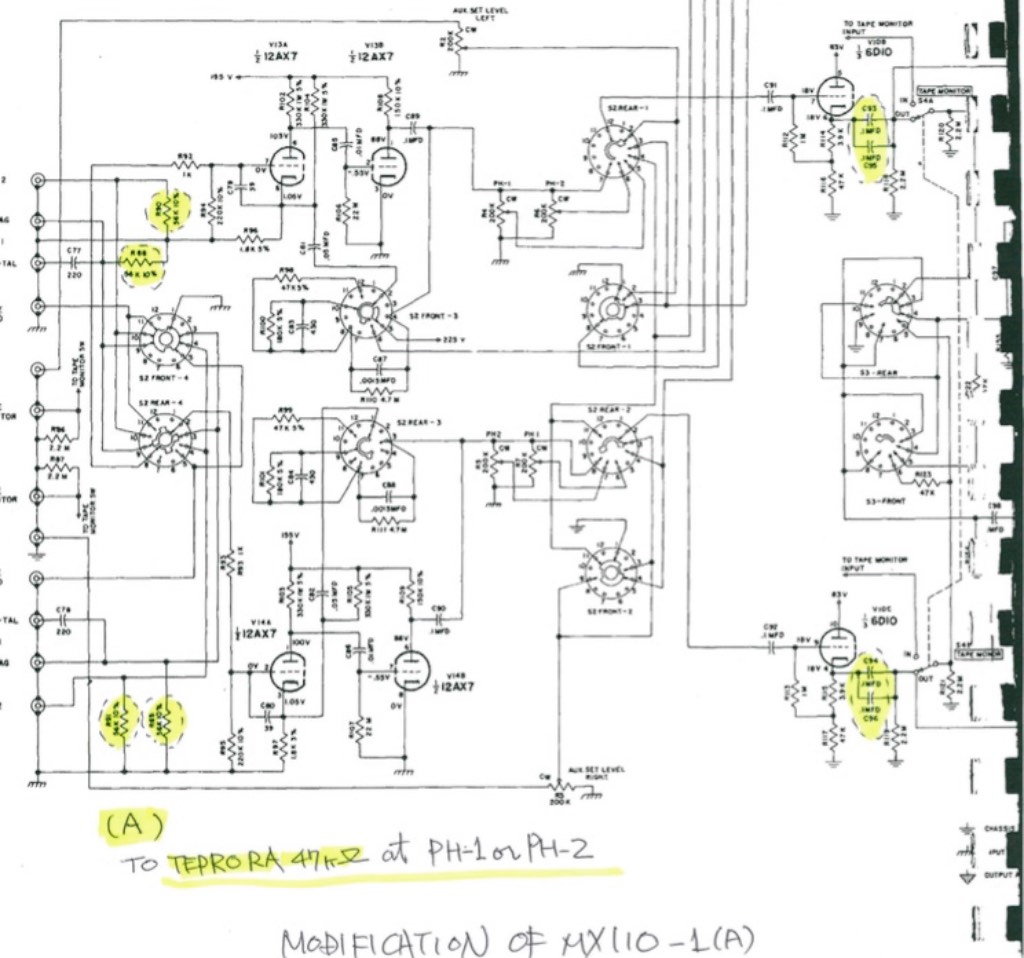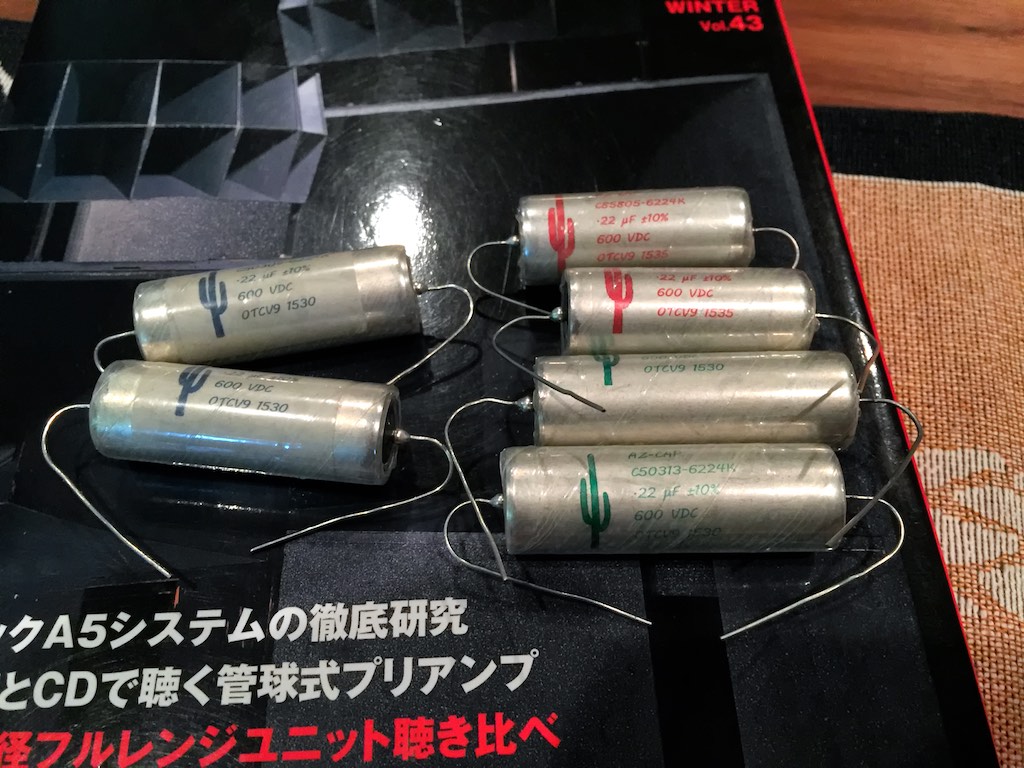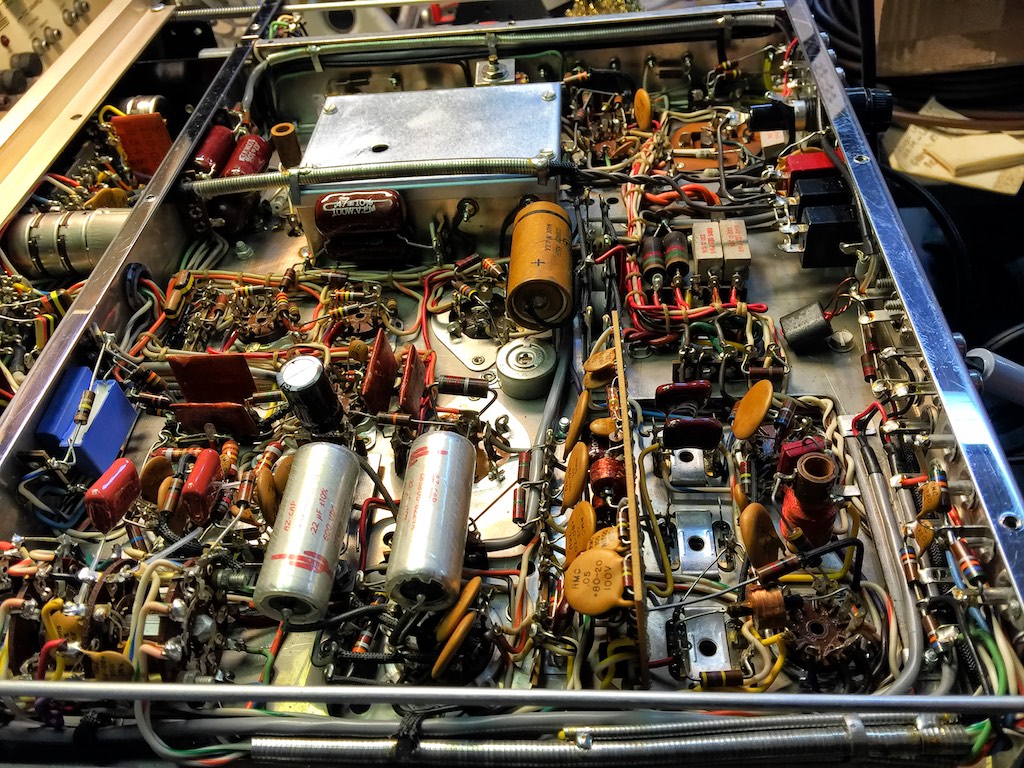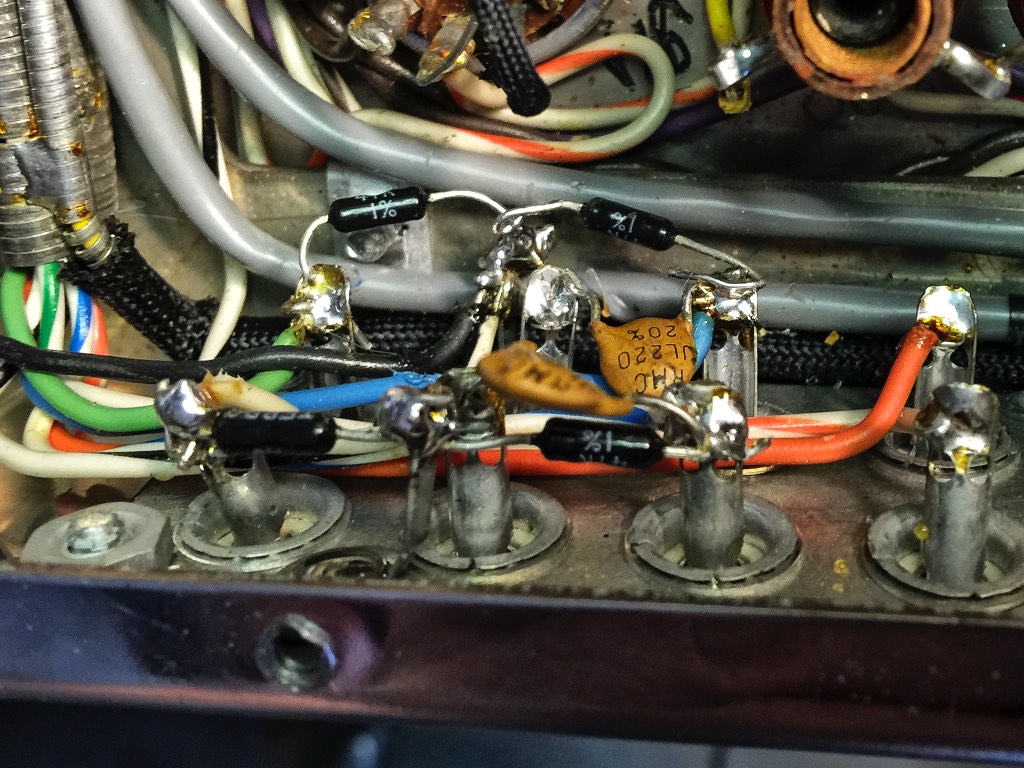As you know if you've been reading along, I've been flabbergasted with how incredibly musical the vintage McIntosh MX110 tuner-preamplifier is, and if you haven't yet read my The Vintage McIntosh Experience article I wrote for Positive Feedback in Issue 77 discussing it, I encourage you to go and give it a read.
Quite a number of posts ago I mentioned that Ron, Leo, George, and I have embarked on a fun 'Real Sound' Adventure with our vintage McIntosh MX110 tuner-preamplifiers, in response to Yazaki-san's suggestion that we do a 'Real Sound' Adventure with the MX110Z.
This was intended as a follow-on to the wonderful 'Real Sound' Adventure we did with the vintage McIntosh MC30 monaural amplifiers, which I wrote about in the Positive Feedback Issue 81 article entitled Adventures in Real Sound with Mr. Shirokazu Yazaki.
To recap the first round of MX110Z 'Real Sound' modifications:
In my earlier post I described how Yazaki-san had told me about some of the modifications he made to his vintage Marantz 7 preamplifier, and what a great improvement they brought about.
Yazaki-san then told me that he thought some of those modifications would make a similar ‘Real Sound’ improvement to my MX110Z, and the Real Sound Adventure with my vintage McIntosh MX110Z was born.
Yazaki-san suggested we start off our MX110Z adventure by making two modifications.
The first modification (A) was to replace the stock 56KΩ phono stage input resistors for PH-1 and PH-2 with Tepro RA 47KΩ metal film resistors, which Yazaki-san considers to be the very best for use in this application.
Yazaki-san told me that the phono stage’s sound quality depends mainly on this resistor, and that “Gary-san (Tepro) said it was developed special for audio use. For about this resistor, Banno-san and I have never found the weakness of its sound. It is a very rare case for us.”
In the second modification (B) we made changes to the first stage cathode follower of the high level input, by replacing two key capacitors with the superb 0.22 uF Arizona Capacitors.
We had a choice of trying the Red Cactus (custom ‘Top Secret’ capacitor used in SPEC electronics, not available for purchase yet), the Blue Cactus (“gorgeous vintage American tone color, open and natural”), and the Green Cactus (“noble European timbre, smoother and more open air character”).
We (Yazaki-san, Ron-san, and I) used the Blue Cactus & Green Cactus Arizona Capacitors in the vintage McIntosh MC30 adventure with superb results. Ron and I were really impressed with the way things came out (see Positive Feedback Issue 81).
To look inside at the circuitry of the MX110Z is a bit intimidating, as there are many tightly packed discrete components, most of which are due to the FM tuner, and a rather smaller section that comprises the phono stage.
As Ron-san and I looked at the crowded interior of the vintage MX110Z, we decided we should go with the Red Cactus capacitors, first because their smaller size made them easier to fit in the limited space, but also because we wanted to hear what these proprietary, not available for sale yet, ‘Top Secret’ capacitors sounded like in the MX110Z.
It turned out in later modifications to Leo's & Georges's MX110Zs that the Green & Blue Cactus capacitors fit in place fine too, so no worries on that front.
You can see the two 0.22uF Red Cactus Arizona Capacitors for Modification B in the first stage cathode follower of the high level input in the left middle of the photo below.

Modification B with the Red Cactus capacitors in the first stage cathode follower of the high level input, which you can see in left, middle, of the photo.
Yazaki-san told me, “One more point is, you might find the FM sound and AUX input sound would be improved with this Red Cactus modification too, because the modification is the first stage cathode follower of the high level input.”
First Ron-san removed the old capacitors from the circuit, then soldered in the Red Cactus capacitors in their place.
Next Ron-san desoldered the stock 56KΩ phono stage input resistors for PH-1 and PH-2 and replaced them with Tepro RA 47KΩ metal film resistors. Those black resistors in the bottom left of the photo below are the Tepro RA resistors.
You can read more about my initial listening impressions to the first round of modifications here, but in summation I found the round one modifications to give a considerable increase in transparency & resolution, while at the same time being more rich, warm, sensual, and liquid, which was a little bit of surprise for me, because that combination of traits rarely appear together.
The second round of modifications involved changes to the MX110Z's power supply at the R116, C1, C2, and C3 positions.

You can see the Green & Blue Cactus 0.22 capacitors to the right of the Red Cactus capacitors from Modification B above.
Yazaki-san thought these modifications might be transformative for the MX110Z, "Yes, I believe it could reach to the best MX110 of all time!".
1. The first modification is at R116, the 47 KΩ resistor, which Yazaki-san recommended we change to the Tepro 47kΩ resistor. Yazaki-san said, "Cathode resistor decides the sound because the signal current flows through this resistor."
2. The second modification is at C1, where we replaced the stock capacitor with the SPEC Ruby-Mica capacitor (MC103DA, 0.01μF / 500VDC ). Yazaki-san said, " Bridge rectifier circuit has good efficiency but diode's switching noise level and distribution might be higher or wider than half-wave or full-wave rectification. And mica capacitor's outstanding performance
for high frequency could allow these noise to be able to terminate to the ground. I hope some effects would be promising. By the way, the Marantz Model 7's plate power supply adopted half wave rectification. I imagine it would be one of the secrets of the sound of the Model 7."
3. The third modification is to replace C2 and C3 with either the Arizona Capacitor Red, Blue or Green Cactus capacitors (0.022μF / 600VDC). Yazaki-san said this modification was, "For strengthen or lower impedance of the plate power supply!
Please select by Jeff-san's inspiration . Because that each color cap could improve the sound, but If you like Red 0.22 for C93-C96, I would like to suggest you to use Blue or Green. Red with Blue or Red with Green could compensate the character of Red."
As you can see in the photo above, for my MX110Z we went with Blue & Green Cactus capacitors in C2 & C3 per Yazaki-san's recommendations.
I'll post the schematic and some more detailed photos for the modifications a little bit later.
Ron modified Leo's & George's MX110Zs in different Mod B configurations from mine so we could do some comparisons. Ron put in Green Cactus capacitors in Leo's MX110Z for Modification B, and Blue Cactus capacitors in George's MX110Z for Modification B, so we can compare it to mine with Red Cactus capacitors.
As a reminder, Yazaki-san characterized the sound of these capacitors like this: the Red Cactus has a "genuine and pure sound, full of fascinations & passions like beautiful art"; the Blue Cactus has a “gorgeous vintage American tone color, open and natural”; and the Green Cactus has a “noble European timbre, smoother and more open air character”).
We're going to get together for an MX110 comparative listening session on Monday, and I'll report back back on the results.
In the interim I may also post some preliminary listening notes about my MX110Z with all the modifications in place and tell you my first reactions.
¸¸.•*¨*•♫♪
Also on Monday the Altec A5 Voice of the Theatre loudspeakers are scheduled for delivery, and the plan is get them set up for a little listening.
Thanks for stopping by!




